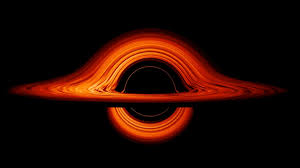James Webb Telescope’s Black Hole Theory
Science & Technology TechnologyPosted by NewAdmin on 2025-03-18 09:04:35 |
Share: Facebook | Twitter | Whatsapp | Linkedin Visits: 36

The James Webb Space Telescope (JWST) has provided groundbreaking insights into the formation of black holes in the early universe, challenging previous theories. One of its most significant discoveries is a supermassive black hole in the galaxy GN-z11, dating back to just 370 million years after the Big Bang. The black hole's immense mass—millions of times that of the Sun—raises questions about how such massive structures could form so early in cosmic history.
Scientists have proposed two primary theories for the formation of supermassive black holes in the early universe:
The Light Seed Theory: Black holes start as small stellar-mass remnants of collapsed stars and grow over billions of years through accretion and mergers.
The Heavy Seed Theory: Black holes form directly from massive gas clouds, skipping the stellar evolution phase and gaining a "head start" in their growth.
JWST's discovery leans toward the heavy seed theory, as the observed black hole has grown much faster than traditional models suggest. It is accreting matter at a rate five times higher than the Eddington limit, which is the theoretical maximum at which a black hole can grow without radiation pushing material away. This rapid feeding process could allow black holes to reach supermassive sizes much sooner than expected.
Additionally, this intense feeding may have severe consequences for its host galaxy. The powerful winds generated by the black hole's accretion disk could expel gas and dust, effectively halting star formation and stunting the galaxy's growth.
This discovery highlights the need for new models of black hole formation and suggests that JWST will continue to uncover more early-universe black holes, helping to resolve long-standing astrophysical mysteries.
Search
Categories
Recent News
- Hyderabad Gears Up for Christmas Feast: Traffic Diversions in Store
- Hyderabad's Homicide Surge: A City on Edge
- Hyderabad's Biryani Scam: When Food Delivery Meets Fraud
- RBI's UDGAM Portal: Hyderabad's Cyber Fraud Warning
- Hyderabad Gears Up for Presidential Visit: Traffic Advisory Issued
- Hyderabad Crypto Scam: Unraveling a Multi-State Fraud
- Cyber Scams Target Unsuspecting Citizens via RBI Portal
- Telangana's Tech-Driven Policing: Drones Take to the Skies
Popular News
- Navigating IPO Market Dynamics Amid Volatility and Regulatory Changes
- Innovative Green Practices and Environmental Initiative
- Massive Worldwide Microsoft Outage Disrupts Multiple Sectors
- తెలుగుదేశం పార్టీ - పేదరికాన్ని నిర్మూలించడంలో వాగ్దానం
- Universities Embrace Remote Learning Technologies Amidst Ongoing Pandemic